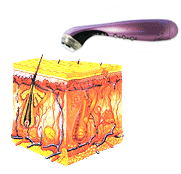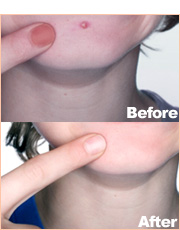How Ultrasound Facial Machine Helps Restore Your Normal Skin Color and Reduces Cellulite

Dermatologists have known for many years that high-intensity energy destroys fat. Radio waves can be used to literally melt fat away, cauterizing tiny blood vessels as the plastic surgeon reshapes the tummy, breasts, or buttocks.
When it comes to your face, however, you really don't want any high-intensity radio wave device blasting away fat. The structures beneath the skin of your face are too delicate and too sensitive, laden with nerves and blood vessels, ever to allow the same kind of treatment for reducing belly fat.
Ultrasound is safe. It's fast. It's easy.
Have your ever seen an opera singer hold a high note so long and so loud that it breaks glass? Ultrasound for your skin does the same thing for excess fat beneath it, only in a way that protects the structures that give it shape and beauty.
Gentleness is the key of benefit of ultrasound for you skin.
Most importantly, it does not heat the skin or the tissues underneath it. Ultrasound will remove dead skin cells that block pores, but it will not damage living skin cells in the lower layers of the skin.
Safe Tiny Pulses To Remove Dead Skin Cells

The frequency used by ultrasound is about 10,000 times higher than the highest-pitched yodels. Very, very weak waves of sound massage the skin approximately 1,000,000 times a second.
Each pulse is so weak that it cannot damage the proteins that interconnect and protect the skin.
These tiny pulses, however, are enough to carry away some of the proteins that discolor the skin.
How Ultrasonic Massager Helps Restore the Normal Color of Your Skin
When we think of normal skin tones, we never think of blue or green. Blue and green pigments, however,  predominate when healthy skin is mechanically damaged.
predominate when healthy skin is mechanically damaged.
When the "purple" of accumulated blood is seen through skin of various tones, however, the bruises may appear black, brown, yellow, blue, or even green, depending on how much the hemoglobin of the blood inside them has degraded.
Ultrasound opens capillaries to carry away damaged hemoglobin and restore normal color to the skin.
Ultrasound Machine helps reduce cellulite, but not fat
Another benefit of ultrasound is its gentle effect on fat. A small amount of fat not only does not harm the skin, it is essential to beauty. Fat cushions the skin against injury. It provides the normal contours of the face. It helps the skin stay flexible and prevents wrinkling.
Don’t Get Confused Between Fat and Cellulite
And ultrasound can help break up cellulite. One of the common misconceptions about cellulite is that it is due to accumulated fat.
Actually, cellulite is due to accumulated water. Where there is cellulite, the skin has overproduced connective proteins called glycosaminoglycans.
These glycosaminoglycans literally strangle the flow of fluids through the skin, so that little bumps of fluid form. Ultrasound encourages the flow of water through the skin and slowly removes cellulite.
Ultrasound Facial Machine Can Keep Cellulite Away
Continuing treatment keeps cellulite from returning.
Just be sure to begin treatment as soon as possible, because untreated cellulite can become permanent!
Special Bonus
- FREE Fyola Gel
- FREE Shipping
- 1-Year Warranty
- 30 Days Money Back
Thanksgiving Promotion ~ Hurry, Sale Ends Nov 28th!
More About Ultrasonic Skin Treatment
 How An Ultrasound Facial Workout Brightens Your Skin
How An Ultrasound Facial Workout Brightens Your Skin
 Micro Massage Effect of Ultrasonic Waves Explained
Micro Massage Effect of Ultrasonic Waves Explained
 Ultrasound vs Microdermabration for Acne Treatment
Ultrasound vs Microdermabration for Acne Treatment
 How Ultrasound Facial Machine Restore Normal Skin Color Reduces Cellulite
How Ultrasound Facial Machine Restore Normal Skin Color Reduces Cellulite
 Can you Reduce Cellulite with Ultrasound?
Can you Reduce Cellulite with Ultrasound?
 Nutrient Absorption With Ultrasound Explained
Nutrient Absorption With Ultrasound Explained
-
 How Ultrasound Skin Care Therapy Works for Sensitive Skin
How Ultrasound Skin Care Therapy Works for Sensitive Skin










